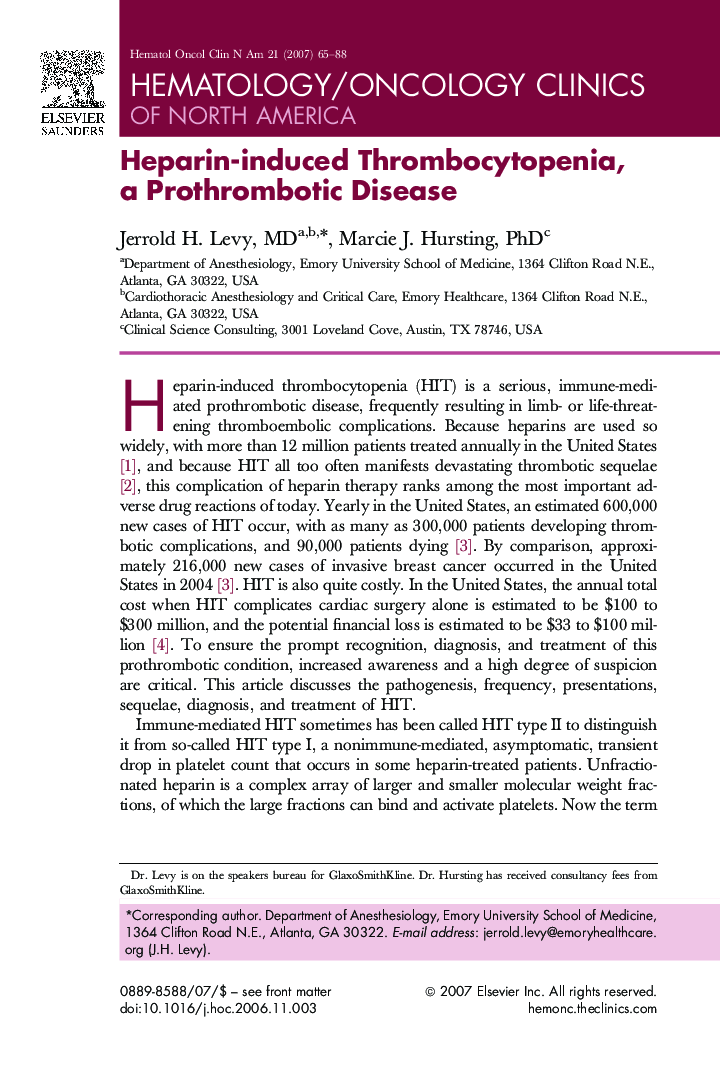| Article ID | Journal | Published Year | Pages | File Type |
|---|---|---|---|---|
| 3332161 | Hematology/Oncology Clinics of North America | 2007 | 24 Pages |
Heparin-induced thrombocytopenia (HIT) is a serious, yet treatable prothrombotic disease that develops in approximately 0.5% to 5% of heparin-treated patients and dramatically increases their risk of thrombosis (odds ratio, 37). The antibodies that mediate HIT (ie, heparin-platelet factor 4 antibodies) occur more frequently than the overt disease itself, and, even in the absence of thrombocytopenia, are associated with increased thrombotic morbidity and mortality. HIT should be suspected whenever the platelet count drops more than 50% from baseline (or to <150 × 109/L) beginning 5 to 14 days after starting heparin (or sooner if there was prior heparin exposure) or new thrombosis occurs during, or soon after heparin treatment, with other causes excluded. When HIT is strongly suspected, with or without complicating thrombosis, heparins should be discontinued, and a fast-acting, nonheparin alternative anticoagulant such as argatroban should be initiated immediately. With prompt recognition, diagnosis, and treatment of HIT, the clinical outcomes and health economic burdens of this prothrombotic disease are improved significantly.
